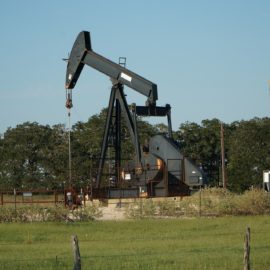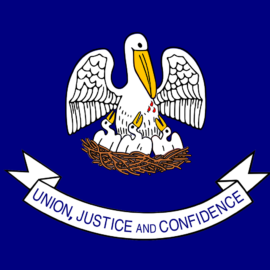
Sport fishermen have meet and they say we love the wind turbines! Build them as they attract what we fish for. We can get close to the turbines and this will make things better for us.
People who fish for a living want offshore wind turbines as far away as possible, but those who fish for fun want to get as close as they can. That’s what Gulf of Mexico commercial and recreational fishing groups told federal energy regulators at a virtual workshop Wednesday. The Bureau of Energy and Ocean Management, or BOEM, is beginning to gather public comment on the likely development of offshore wind energy in the Gulf within a few years. The input will help guide the planning and permitting of wind farm lease areas, and potentially lead to aid for fishers affected by turbines, transmission lines and related infrastructure. While commercial shrimpers worried that turbines might crowd them out of prime harvesting areas, recreational fishing groups wanted assurances they could get as close as possible to turbines, which can act as artificial reefs. Like offshore oil platforms, wind turbines offer attractive real estate for corals, sea fans, sponges and algae, which in turn draw the types of fish that anglers prefer, including red snapper and jacks. “Our biggest concern is access to these structures,” said Richard Fischer, executive director of the Louisiana Charter Boat Association, which represents recreational fishing guides. “It’s good there are no access restrictions on the East Coast.”
nola.com
Looking at restrictions at other wind farms, they are not kept away from the turbines so don’t expect to be kept away in the Gulf.
BOEM officials said the Coast Guard hasn’t prohibited boats from floating near the two wind farms on the East Coast, and there are no plans for new restrictions in the Gulf. “There should not be any restrictions on vessels operating near [wind] facilities,” BOEM environmental scientist Brian Hooker said. Off the coast of New England, commercial fishers are fighting plans for large offshore wind farms. They say the farms will overlap some of the best spots to catch squid, lobster and other species, and could make fishing more dangerous and costly. Gulf shrimpers, however, have long had to coexist with oil and gas platforms, pipelines and other industrial infrastructure. But the addition of wind farms won’t make their jobs any easier, and could increase the financial burden from damaged nets and other gear, said Glenn Delaney, a lobbyist for the Southern Shrimp Alliance. “Shrimpers will be affected Gulf-wide,” he said. “There will be cumulative impacts on shrimping activities and access to grounds.”
The choice for building the wind farms is off Texas and Western Louisiana. The rest of the Gulf coast is secondary.
Most wind energy developers interested in the Gulf are eyeing the waters off Texas and west Louisiana, where wind speeds are strongest and there’s easy access to industrial ports and oil and gas service and construction businesses eager to transition to the offshore wind industry. But the western Gulf is also where the best shrimping is, drawing boats from all five Gulf states and beyond. “We’ve got shrimpers from every port in the Gulf [who] fish off the coasts of Louisiana and Texas,” Delaney said. “We even have some Atlantic-based shrimpers coming in to shrimp over there.” Shrimpers who snag a net on oil and gas infrastructure can tap into a special, federally managed gear compensation fund. No such fund exists for damages related to the offshore wind industry. BOEM acknowledged there’s strong interest in creating such a fund, but officials say their hands are tied. Mike Celata, BOEM’s Gulf region director, suggested shrimpers to take the issue up with Congress. “I’d encourage organizations like yours to move in that direction,” he said. “As federal employees, we can’t lobby Congress, unfortunately.” BOEM plans to issue its final guidance on the development of offshore wind energy in the Gulf next summer. Comments on fisheries issues may be made at regulations.gov/document/BOEM-2021-0083-0001.
A new way for doing business and all will have to adapt. The wind farms are the best bet for powering the electricity needs of the growing population. As we see more and more weather changes these farms become more necessary.



